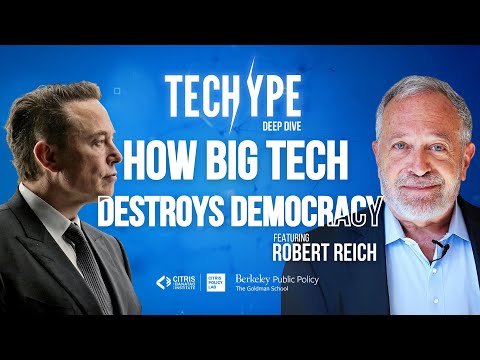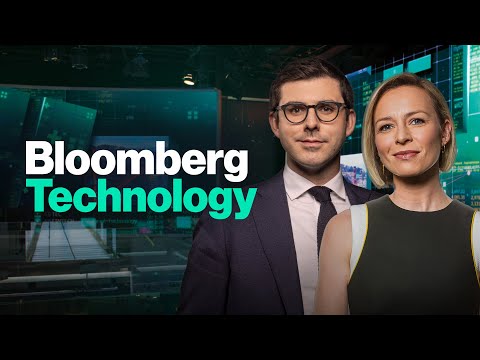Wakeup call! Environmentally friendly e-health

if a municipality wants to start using remote care and they are being concerned about the climate impact which would you advise them to do I would say think hard about the case in in Practical terms uh if it has large volumes uh I'm quite sure that the good digitalization is probably beneficial on the environmental front but just throwing in digitalization on anything uh some rarely Used Services it can be do no do more harm than good actually uh so I will first talk about results of a qualitative assessment in this topic and then give the word to bianne to talk about the climate impacts in particular and then I will return with some conclusions um this work that I am presenting has been done together with my colleagues at Roots University the first few words about the background uh what is this research related to so we had a finished project funded by The Finnish prime minister's office and coordinated by KPMG it was a method development project first and foremost and concerned digitalization of Public Services there is a need for a concrete practical tools for assessing environmental impacts of digitalization such as climate impacts and today we will present key results briefly of our two case studies that focused on social and Healthcare Services so we had two types of Assessments a quantitative impact assessment that yonder will tell about and then our qualitative impact assessment with broader covering both environmental impacts and related social and societal impacts the two case studies again case number one was related to Home Care Services payat Hammer joint Authority for health and well-being their elderly care services and especially video call and Medicine dispenser services and case number two uh concerned remote Health Care appointments in South Korea social and healthcare district I will mention these units again in a quite soon but first about case one uh video call services you can see this biotama region on the map on the right hand side so parts of these home care services for elderly people older people are produced as remote care services video core services are provided with a tablet that is brought to the clients home as part of the video visit system that they have been using since 2016. a care professional contacts the client according to uh specified timeline and these services for the clients they are tailored according to the person's needs so it may be a question of guiding and ensuring medication intake and monitoring nutrition for instance that it can also be about an opportunity to participate in group events and interact with other clients medicine dispenser Services again ensure that the clients receive their regular medications in a timely manner and the care professional doesn't come just to give the medicine the dispensers are generally filled for one or two weeks at the time and if there is a disturbance such as a power outage or the client doesn't take the medicine offers the device makes an alarm that goes to a professional they have two technologies in use air wonders and accidentally and the purpose of both these types of services in case one is to replace some of the Care Professionals visits not necessarily all and it's also very important that the functional ability of the clients is is such that that they can use these services meaningfully in case two the remote Healthcare appointments again you can see the map on the right hand side and this region of South Korea on the map uh three units were selected together with the case organization first of all Dental Care and this Concerned Dental examinations of one-year-olds secondly nutritional care and thirdly mental health and substance abuse services for Children and Youth that is family counseling and support for youth these remote appointments are in principle available to all residents of this region but the Care Professionals offer the option of a remote appointment using either a video visit or teams um also the family members can participate in these appointments if needed and if appropriate and also professionals from several different Services as a network and these can be very useful if for instance a specialist medical doctor is needed from another city you can also see the shares of the appointments of all contacts on this slide we collected interview data we interviewed 23 persons all together about a year ago from case one and case two professionals from different roles and then we also interviewed three technology suppliers uh Representatives we had in addition to the interview materials we had documents provided by the case organizations as our research materials which means statistics for instance and I will move on to the results of the qualitative assessment we analyzed the interviews using content analysis and our method was based on so-called human impact assessment I would also like to mention that these two cases that we had they concerned different client or patient groups they concerned different professional groups and also different service types so this offers quite a multi-dimensional picture of digitalization in Elderly Care and health care services these qualitative results were divided into excuse me environmental impacts positive and negative that's the main focus today and then uh secondly social and societal impacts that are related to these environmental impacts and those were also divided into positive and negative ones those are also very important to assist but since we don't have much time today I will mention them very briefly in case one a video called medicine dispenser Services positive environmental impacts were related to decrease in kilometers driven so in the case of the medicine dispenser the decrease can be even from 60 visits by the Care Professionals per month per client two two visits and that's fulfilling the dispenser but usually early part of the visits are replaced in the case of the video calls they can also decrease the number of home visits uh when it's a question of some measuring and dosing visits related to care there is also a decrease in medicine wastage savings on Care Professionals protective equipment and recycling is handled but then they will talk more about that I believe and you can also see a descriptive quotation from the interviews on the right hand side where a nurse says that it's frustrating to drive 50 minutes to give the morning morning medicine if that's the only aim of the visit that's the case two remote Healthcare appointments positive environmental impacts were related to the fact that this is a large geographical region so remote appointments decreased traveling of both Care Professionals and clients there are also savings on materials and waste and some decrease in paper use um as to workspace there are no actual savings on that but there is more flexibility in the use of the workspace because an ordinary office is sufficient for a remote appointment moving on to negative environmental impacts in case one they are related to energy consumption of the whole architecture and Janu will talk more about that um in the case of the medicine dispenser also a battery is needed in addition to Mains power that's a detail to mention an interesting detail with regard to Medicine dispensers is also these error messages or alarms they sometimes require a home visit and they are something that could be avoided or decreased with the help of good planning and also good guidance and and training when these medicine dispenser is brought to the client guidance is always given but um still better planning and by ensuring the Care Professionals technical expertise um some of these unnecessary driving related to error messages or alarms could be avoided the number of workspaces is not affected in the case of this video call and Medicine dispenser Services because the services have been provided at the client's home and you can also see a descriptive quotation on the right hand side about this need for good training and good supports negative environmental impacts in case two were related to um again these energy use issues there are multiple environmental impacts and is necessary to consider how these things interact so despite the decrease in driving there may be a negative environmental impacts arising due to data transfer for instance it is also good to keep in mind that different kinds of support services are necessary I.T support for instance and they increase negative impacts when you think about this broad whole the number of workspaces is not directly affected because some space is needed for also for these remote appointments and very briefly I will mention this important additional information concerning social and societal impacts because they are in many ways intertwined with these environmental impacts first about the positive ones cases one and two uh these social and societal impacts were divided into three levels so to say firstly clients and patients or patients secondly employees and thirdly service organizations and the society so you can see that positive impacts were related to savings savings on service fees for instance saving time money and effort spent on traveling improved accuracy of timing of medication social interaction easier planning a Time use at work networked multi-professional collaboration and more rational allocation of resources as well as reduction of canceled appointments and no shows moving on to negative social and societal impacts um here you can see that these services are not necessarily suitable for everyone they may even increase inequality of citizens remote appointment can worsen problems or maintain them it can be very tiring for the employees to learn these new things when the work is already very busy there is also no decrease in total workload and it's not possible to observe the human being as a whole or the living conditions remotely management can also become more complex and I will now hand over to Yan thank you helenan good morning The Finnish environment Institute as well our role in in the project was to actually uh calculate the climate impacts I.E make the carbon footprint calculations for for these services this is the team that we we had uh for for the project then we can go to the next slide okay thank you um Digital Services uh I wanted to talk about in in the beginning a little bit before we go into the actual results uh the climate impacts of Digital Services are a bit tougher to assess than than many many of the kind like products or things like that because the complications of of the network and and the various parts of of the service are divided across the globe basically and and within all different organizations so we need to make some simplifications and then and then handle one of these parts as as kind of an a whole good example of that is is the uh the number three here the network it is vastly uh complicated system of thousands of of computers basically and base stations and such but we need to have a full assessment of of that Network and and then use that kind of values so we can't go into every detail in in calculating carbon Footprints of Digital Services uh we just need to make the right kind of assumptions like kind of the limitations and and then we can have some practical results what we have in all of these cases is these parts basically so there is uh one there is the equipment that are used to make the service for example the nurses have workstations that they use for the video calls then there are some servers some devices where the applications are running the services and this can be in in your premises or somewhere in the cloud then there's the network I mentioned which is always between some of the parts of the Digital Services and then of course there's also the the equipment at the service consumption side the user's equipment and and their network connection as well next to go into the results the video call services first this is kind of the the components that we were modeling for for video call services so you remember from Helena's discussion that there's a tablet that is used to make a video call it's a dedicated tablet for for this purpose so you only use it for that and and then there's the service provider which is on the other end of the call and of course some some Services some outsourced service servers uh somewhere behind the network again next then looking at the carbon footprint after the analysis of all the different components uh we we can see that in this case where there is a dedicated tablet to be used basically we have calculated with two calls per day 15 minute calls and and still the footprint of making the tablet uh for the consumer to use only or the patient to use only for this service is is a very big part of this footprint the the energies of the tablet or energy use of of other services in the service production side are negligible and and the mobile data uh being being a big part of video calls is is something but not still still not as much as the manufacturing of the equipment we end up with about 90 kilos of CO2 equivalence per year next and when comparing to some of the more traditional Services I mean if you want to see whether a service is is a positive or A negative on on total we need to compare what it kind of saves and if you are driving by car to meet the clients that we are on the other hand making the video calls but instead we would be driving then it would very fast become obvious that that you need to like or the video call is much better option for the environment but on the other hand if you are using a bicycle uh in the city area for example then uh the video call service is by far probably more environmentally unfriendly so it's not always clear that the digital service is the better next going to perhaps a little more complicated service it's the medical dispenser service and there you have a medicine robot or dispenser at the client's premises and and what makes it a little more complicated is that you you have a this special equipment there we need to analyze and then there's also the fulfilling of the medicine report every two weeks or so and so you need to calculate the car for that at least next so the medicine dispenser Service as a whole again most of the footprint is coming from the manufacturing of the device uh there is however a considerable uh part of the carbon footprint coming from refilling so driving to the client or the customer and and then if you're using something like medicine cups uh it can be a significant change again on the other hand the data or the energy used by the medical dispenser is quite low on big truck this becomes to about 30 kilos per year and next we have here opened a little bit the biggest part which is the manufacturing and and we see that the quite heavy robots uh actually they do get most of their footprint from the metal parts to chassis chains within the machine or or such equipment but the screen and the computer even though they are tiny little computers within the medicine dispenser they do come to about the same as as the heavy metal components so you can see here that the the burden of of computers and electronics is considered considerable those weigh about 100 grams versus the 10 kilos of the metal parts next and then for the comparison so what we have in medical dispense and services is about 25 to 30 kilos per year as calculated for the service usage and here you can see what what kind of options we have so if you are driving the car to the customer to give it medicine twice a day it is certainly a much worse on the carbon footprint uh even even driving a bike I mean you need to still manufacture the bike and and so on it is on the climate impacts it becomes a larger uh footprint than than the medical dispenser what we can see here is that if you have a service that is used a lot like twice a day and and it might replace something of a travel then it's it's a known uh no-brainer it's it's good on on the climate benefits next then the case two the remote Healthcare appointments here the difference to video calling is that we are not or the service users are not they have no specific uh tablets or or other Hardware to to use the service and and only this service so we we kind of well you use your own phone you just use the 10 minutes at the remote Healthcare appointment takes or 30 minutes and let's calculate it then I mean it's not only for this service that you are causing some carbon footprint so that makes a big difference and we can see actually uh next slides that this is quite different from from the first case of video calls even though these parts are are more or less exactly the same as as in that service next so if you remember what the uh Pi was look looking at in in the first case it was kind of the opposite uh so the service production was a very small piece of the pie more or less the same as the service consumption the user side in this this case so when we don't have the dedicated tablet to this this service uh the user side is it's much smaller it's basically the mobile data part only uh all in all this is more evenly uh divided the carbon footprint and the carbon footprint you calculated is about the less than 50 grams per appointment so in the first cases case we we used per year on the services and here it's per appointment since we don't know how many appointments and typically they might be just just one appointment next okay so when when we have this kind of service where you have your own phone basically maybe a laptop or something but quite often a phone or a tablet nowadays uh as as the kind of medium to to do to take the service with then we have quite different results uh meaning that it is typically much better to to take this kind of service than than have a have a physical meet but of course if you are in the city area only and you could actually walk to the hospital or take a bike uh maybe even drive your electric car for for 500 meters then it's probably even better than than this digital service next to kind of pull those together uh all the results you can see here what are the the Footprints like the video call services about 90 kilos for which we remember that the dedicated tablet was a big part of uh and and that compares to about 500 kilometers of driving uh within the year so if if you save that much then on the environmental front that's that's better uh the medical dispenser uh quite a fast I mean you you can't try much to to the patient which takes the medication twice a day to to have the same kind of footprint and then on the remote Healthcare appointments uh again quite a low carbon footprint so these cases of course we were selecting based on on having something that's uh uh feasible to see the benefits so these are not these are kind of too good cases perhaps but even with this we can see that there is still significant footprint and uh and it needs to be considered when when to take the Digital Services next so uh in short we we also made a small assessment tool so for simple Services we we made a website to be able to calculate uh and assess the the impact the climate impact of of services uh it's a three-part tool and that where we we try to have some guidance for for people since this is quite new and then there is a calculator for simple services next uh this is just a picture of the calculator unfortunately it's only finished at the time uh basically there are checklists to help you identify the most important impacts Improvement possibilities but then there's also this kind of online calculator we can where you can change the values of where do you have your servers or how much data does your service consume and so on and you can directly see the values in those bars to have some kind of an idea what the service uh what the different options are causing to the footprint right away that helps planning and and making a better service back to you Helena thank you and I will then try to wrap up very very quickly so um we of course can see that there are really big changes in the operating environment of Social and Healthcare Services nowadays so not all impacts are directly due to digitalization development and it's also very difficult to assess the situation before digitalization and after because it often is a gradual process um environmental impacts are not the key driver of digitalization in these services and the the interviews also mentioned that they're not very actively discussed we can uh probably see many new challenges in Impact Assessments in the future because a wider adoption of emerging Technologies such as Robotics and artificial intelligence but these developments also highlight the importance of assessment activities in the future and our joint research also clearly showed that the impacts of digitalization are often very multi-diuretic directional and intertwined and closely connected to people and people's ways of doing things and here is a an example of these intertwined and multi-directional impacts in the case of medicine dispenser services so it really all starts from good planning and good introduction to technology that may uh improve or make the use a lot easier more confident more successful decrease the number of alarms and other error situations and then improve possibilities of foresight at work functionality of the whole of work and services and then positive climate and environmental impacts so it's really this this beginning planning and introduction is vital a vital stage very briefly about conclusions so um multi-perspective and multi-method impact assessments are important every digitalization action also causes negative climate impacts that's something very important to keep in mind and also here it's mentioned that this planning and implementation of digitalization affects its climate and other impacts efficacy the qualitative research that I was presenting that is especially important when access to numerical data is limited it can help in gaining an understanding of the service context systemic understanding and also show that for instance this social and societal impacts and climate impacts can be two sides of the same coin we only have a policy brief in English at the moment the long project report is in Finnish with just abstracts in Swedish and English but we also have a journal manuscript in process so stay tuned thank you very much
2023-02-18 19:41


